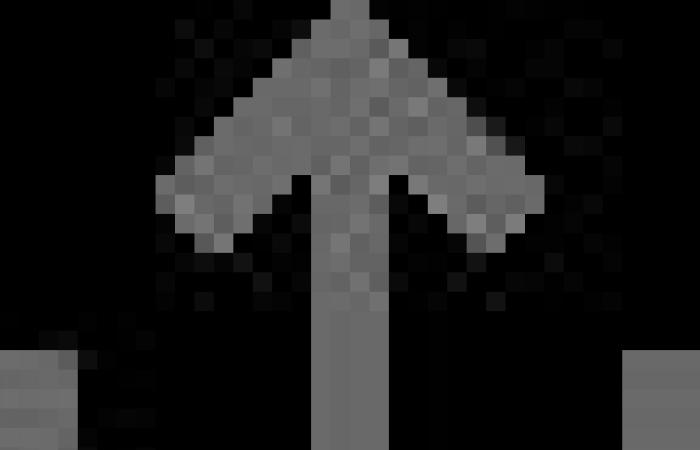The Israeli army bombarded the Gaza Strip on Sunday, particularly the north where fierce fighting continues against Hamas in the Shujaiya area and has forced tens of thousands of Palestinians to flee.
Published at 8:07 a.m.
The war in the Palestinian territory, triggered by an unprecedented attack by the Islamist movement in Israel on October 7, also raises fears of a conflagration in Lebanon.
According to an AFP correspondent, numerous airstrikes targeted Gaza City in the north, as well as Rafah and Khan Younes in the south, during the night.
“Our forces are in operation in Rafah, Shujaiya, everywhere in the Gaza Strip,” Israeli Prime Minister Benjamin Netanyahu declared on Sunday before the war cabinet. “Dozens of terrorists are eliminated every day. It’s a difficult fight that we fight on the ground, sometimes hand-to-hand, and also underground,” he said.
The operation carried out since Thursday by Israeli forces in Shujaiya, an eastern neighborhood of Gaza City, continued on Sunday, according to witnesses and doctors.
The army announced that the day before it had “eliminated several terrorists, discovered weapons, carried out targeted raids on booby-trapped combat positions” and had “struck dozens of terrorist infrastructures”.
On May 7, it launched a ground offensive in Rafah, a border town with Egypt then presented by Israel as the final stage of the war against Hamas. But fighting has since regained intensity in several other regions that the army had claimed to control.
« A sickness »
Between 60,000 and 80,000 people, according to the UN Office of Humanitarian Affairs (OCHA), fled the east and northeast of Gaza City after the army’s evacuation order on Thursday. .
“People are trapped in their homes in Shujaiya. It is difficult to leave the neighborhood under the bombardments,” Siham Al-Shawa, aged 50, told AFP. “Our life has become hell,” he added.
The attack carried out by Hamas on October 7 resulted in the deaths of 1,195 people, mainly civilians, according to an AFP count based on official Israeli data.
Of the 251 people kidnapped, 116 are still being held hostage in Gaza, of whom 42 are dead, according to the army.
In retaliation, Israel promised to destroy Hamas, in power in Gaza since 2007 and which it considers a terrorist organization, as do the United States and the European Union. Its offensive on the Gaza Strip has so far left 37,877 dead, mostly civilians, including at least 43 in 24 hours, according to data from the Health Ministry of the Hamas-led Gaza government.
The war has caused massive population displacement in the small territory besieged by Israel, where water and food are in short supply.
A mission officer for the UN agency for Palestinian refugees (UNRWA), Louise Wateridge, described living conditions in the territory as “dire” on Friday, where humanitarian aid is arriving in dribs and drabs.
” Nothing new ”
In Tel Aviv, thousands of demonstrators gathered again on Saturday to demand the return of the hostages and protest against Benjamin Netanyahu, widely criticized for his management of the war.
PHOTO ELOISA LOPEZ, REUTERS
Demonstration in Tel Aviv to demand the return of the hostages, June 29
A 26-year-old ex-hostage, Noa Argamani, released on June 8 with three other captives during an Israeli army operation, launched an appeal for their release in a video message. “Although I have returned home, we cannot forget the hostages who are still in captivity in the hands of Hamas, and we must do everything in our power to bring them home,” she said. declared.
A plan presented at the end of May by US President Joe Biden, proposed according to him by Israel and providing for a ceasefire associated with an exchange of hostages and Palestinians held by Israel, remained a dead letter in the face of the irreconcilable demands of the two camps.
A senior Hamas official based in Beirut, Osama Hamdan, said Saturday that negotiations for an agreement with Israel on a ceasefire and the release of the hostages had not led to any progress, and that a latest proposal received by his movement on June 24 brought “nothing new.”
The Israeli Prime Minister, for his part, affirmed on Sunday that Israel’s position “had not changed”: “Hamas is the only obstacle to the release of our hostages.”
Benjamin Netanyahu says he wants to continue the war until Hamas is eliminated and all hostages are released, while the Palestinian movement demands a permanent ceasefire and an Israeli withdrawal from Gaza.
Fears of seeing the conflict spread to Lebanon have recently increased with threats exchanged by Israel and Hezbollah, a powerful Islamist movement allied with Hamas and supported by Iran.
The leader of Hezbollah, Hassan Nasrallah, warned on June 19 that “no place” in Israel would be spared in the event of war, after the army announced that it had “validated” “operational plans” for an offensive in Lebanon.
Since October 7, there have been almost daily exchanges of fire between the Israeli army and Hezbollah on the Israeli-Lebanese border and have pushed tens of thousands of residents of the border areas in southern Lebanon and the north to flee. of Israel.







